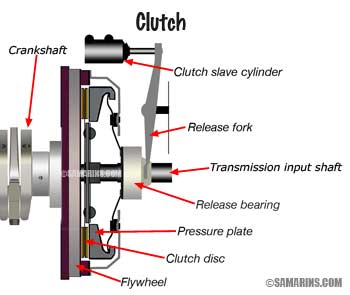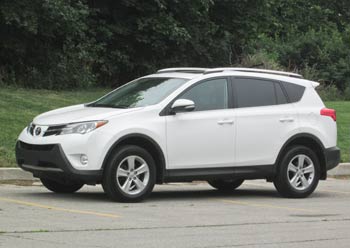Pros and Cons of a Manual Transmission
January 14, 2023 By Vlad Samarin
Less than 10 percent of cars in North America are sold with a manual transmission. Should you ignore cars with a stick when shopping or is it a good way to save money? What are the pros and cons of a manual transmission? Do cars with a manual transmission require more maintenance? What to watch out for when buying a used car with a manual transmission? Let's start with pros and cons.
Pros:
- Fun to Drive. Yes, the automatic can shift faster, but If you enjoy the driving experience, the manual is the way to go. Nothing will replace the sensation of shifting the gears with the stick.
- Control. When driving a manual transmission you are in full control. It's not some software or AI, it's you who decides how to work the clutch, when to shift gears and in what order.
- Potential Fuel Economy Improvement. A manual transmission is lighter than an automatic and it gives you the ability to adjust how you shift gears. You can improve fuel efficiency by simply up-shifting sooner and keeping engine RPMs lower.
- Longevity. A manual transmission can last very long. There is a reason why most transport trucks use manual transmissions. Change the gear oil every 60,000-80,000 miles and gears can easily last for over 300,000 miles. The only thing that will need to be replaced at some point is the clutch.
- Lower Cost to Produce. A manual transmission is a simple lightweight device, see the photo below. There are no complex electronics, there are no hydraulic valves or a transmission fluid cooler and there is no transmission control module, which is a necessary part of an automatic transmission.
- Manual Transmission Cars are Cheaper. You will always pay less for a manual car unless it's a highly-sought model. If you know how to drive a manual, why not benefit from a lower price?
- Cars with a Manual Transmission Can be Started Even with a Weak Battery. If your vehicle's battery is too weak to start the engine and you are in the middle of nowhere with no help available, a car with a manual transmission can be started even with a weak battery using a push start method. No such luck with an automatic transmission.
Cons:
- Difficult to Learn. It takes some time to master driving the stick. Learning to drive a manual is more difficult compared to an automatic transmission. However, once you learn it, you will always remember it.
- Requires More Attention when Driving. Since you will need to shift gears as you drive, driving a stick requires the driver to be more involved. Of course those who drive the manual every day will tell you that after a while your body learns to shift gears automatically. It's like riding a bicycle and not constantly thinking about how to hold a balance.
- It's a Chore to Drive a Manual in Stop-and-Go Traffic. If your daily commute includes long intervals of slow-moving traffic, driving a manual can be tiring. It's better suited for light traffic and highway commutes.
- Clutch Wear. All cars with a manual transmission have a clutch. At some point the clutch will need to be replaced, which is not cheap. Of course, there are ways to minimize clutch wear. We have seen many cars where the clutch lasted for over 150,000 miles.
Summary
Cars with a manual transmission are not only cheaper, but simpler and less troublesome. Problems with automatic transmissions are very common in many cars. In addition, a manual transmission offers a sense of exclusivity, given the small numbers of manual cars in North America. Unless your daily commute includes frequent slow-moving traffic, cars with a manual transmission should not be ignored.Does a manual transmission require more maintenance?
No, it doesn't. The manual transmission is a very simple device, see the photo. All it needs is to have the proper level of gear oil. This means that similar to an automatic, the manual transmission oil will need to be changed in regular intervals (every 60,000-80,000 miles). The only thing that will need to be replaced at some point is the clutch. However, it will only need to be done at high mileage and there are ways to minimize the clutch wear.How to make the clutch last longer?
It's easy if you know how it works. The clutch wears when there is friction. The more friction, the more it wears.Most friction happens when taking off from a stop: from the moment the clutch starts to grab when releasing the clutch pedal to the moment when the clutch pedal is completely released.
You can minimize the wear of the clutch disc If you release the clutch a bit quicker while still keeping it smooth and with less acceleration.
This is how I do it when taking off in the 1-st gear:
1. With minimal acceleration, release the clutch quicker, while still keeping it smooth.
2. Accelerate more after the clutch is fully released and the vehicle is in motion.
3. If possible, avoid intersections where I have to take off on an uphill slope.
With these methods, the car I'm currently driving has an original clutch with 168,000 miles (271,000 km).
What to Watch Out for When Buying a Used Car with a Manual Transmission
When buying a used car with a manual transmission, the clutch needs to be checked carefully. One of the signs of a potentially worn out clutch disc is when the clutch engages almost at the end of the pedal travel (close to the top). Normally the clutch should engage somewhere closer to the middle of the pedal travel. The clutch should work easily and smoothly.Another sign of a slipping clutch is when accelerating sharply in the 3-rd or 4-th gear while driving at a moderate speed, the engine RPMs go up, while the vehicle speed remains almost the same.
The smell of a burnt clutch from the engine compartment is another sign of a slipping clutch disc.
Watch out for low level of the fluid in the clutch fluid reservoir. It could be caused by a leak in the clutch hydraulic system. In some cars the clutch slave cylinder is located inside the transmission bell housing and will be expensive to replace if it leaks.
Watch out for vibration felt in the clutch pedal when it's depressed. It could be caused by deformed/broken clutch pressure plate springs. Avoid the vehicle.
Also avoid the vehicle if the transmission pops out of any gear by itself or if it grinds when shifted into any gear.
If it's a RWD or 4WD truck, make sure there is no leak from the extension housing seal where the driveshaft is connected to the transmission. It could be a sign of a worn-out extension housing bushing, damaged slip yoke, bad u-joints or bent driveshaft
Noises: If the clutch chatters when taking off from a stop the for first time, it could be because of clutch disc contamination from a possible oil or coolant leak.
Also watch out for abnormal noises from the transmission when driving. Try accelerating and decelerating in each gear. If there is an abnormal grinding, growling, whining or whirring noise in any of the gears, avoid the car.
A chirping noise coming from the clutch area when the clutch pedal is depressed and the engine is running could be caused a worn-out release bearing. This type of noise disappears when the clutch pedal is fully released. Replacing the release bearing is costly as the transmission will have to be removed.
Read Next:
Buying a Used Car: 10 Common Mistakes to Avoid
Signs of automatic transmission problems when test driving a used car
Pros and cons of buying a car with Direct Injection
What mileage is OK for a used car?
Pros and cons of the CVT transmission
How to inspect a used car - illustrated guide
How to check an engine when buying a used car
Buying a Used Car: 10 Common Mistakes to Avoid
Signs of automatic transmission problems when test driving a used car
Pros and cons of buying a car with Direct Injection
What mileage is OK for a used car?
Pros and cons of the CVT transmission
How to inspect a used car - illustrated guide
How to check an engine when buying a used car




